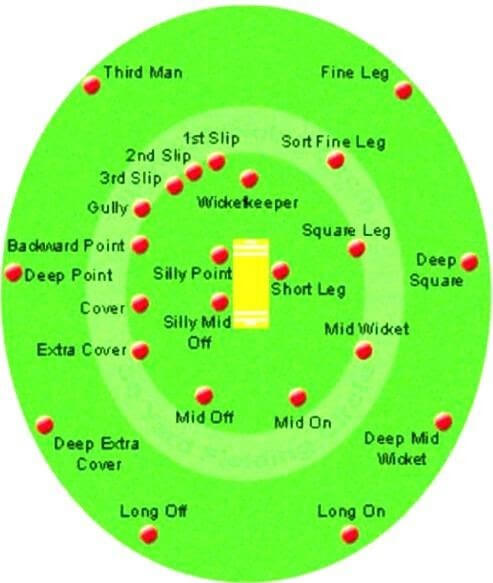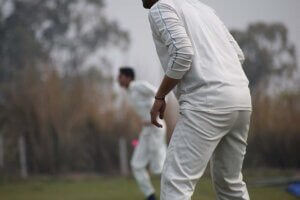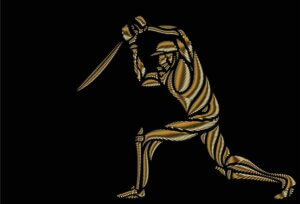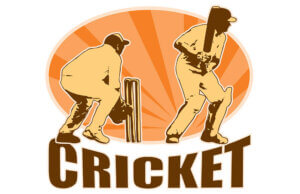Cricket Fielding Rules
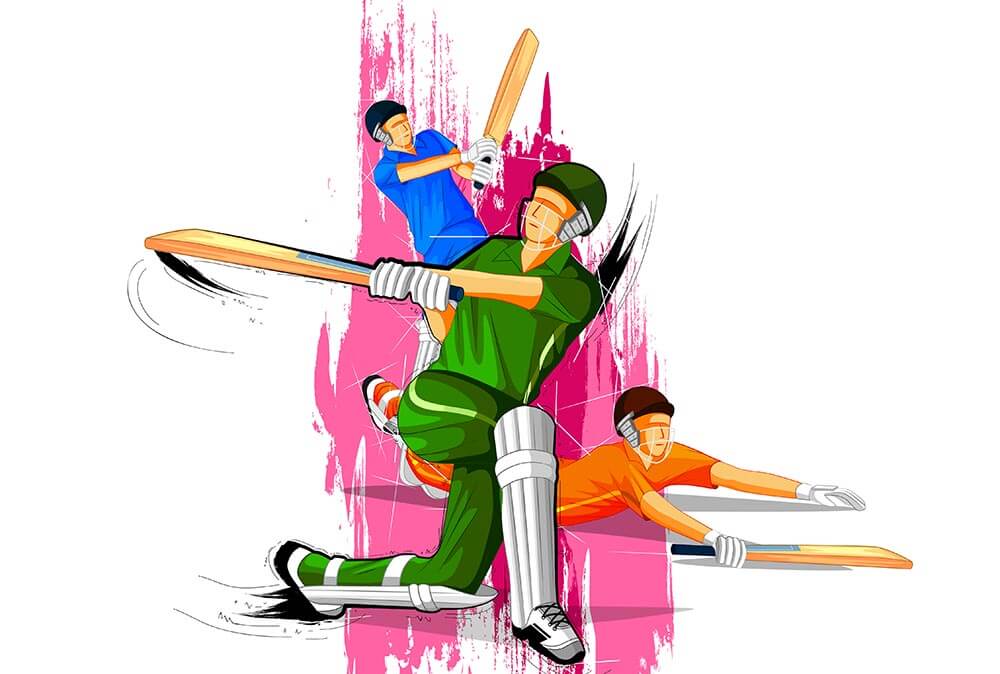
While batting and bowling continually make the headlines across all formats of cricket, few vocations in the sport are as pivotal as fielding. No matter what standard of the game is taking place, games are generally won and lost in the field with the old adage ‘Catches Win Matches’ being regaled at cricket grounds the world over.
For those with experience in playing the game, the niches and nuances of cricketing fielding positions are a huge part of its appeal. For those who are new to cricket, however, there is an overwhelming array of lexicon and terminology within the cricket fielding sphere that can be a deterrent for even the most ardent sporting enthusiast.
With a huge space to cover and only 9 outfielders in operation (factoring out the bowler and the wicket-keeper), the responsibility for choreographing an appropriate ‘field’ falls to the captain – who has to be adaptable, ruthless and calm in equal measure. Effective field positioning can transform a game and making the batters worry about the layout of the field in front of them, rather than the bowler/scoreboard, can often lead to their demise.
Here is a rundown of some of the key cricket fielding positions:
| Fielding Position | Description |
| Wicket-Keeper | The fielder directly behind the stumps who wears gloves and can receive the ball directly from the bowler. Wicket-keepers can also dismiss batters by stumping them – should they leave their crease. |
| Slip(s) | Stood directly to the side of the wicket-keepers, the slips form an arch in an attempt to directly catch any edges that come their way from the batter. |
| Gully | Generally stood 45 degrees from the batter, the gully fielder is also looking to catch any edges – that travel wide of the slip cordon. |
| Point/Deep Point | Based 90 degrees from the batter, fielders stood at point are in the action to try and prevent a cut shot from passing them. There is also a Deep Point, which is on the same line but with the primary aim of preventing a boundary by standing on the ropes. |
| Cover | Cover is a position that sweeps a large area on the off side and is often in the batter’s eye line. There is also a deep cover, which is a position on the same line but based just in front of the boundary ropes. |
| Extra Cover | Stood to the side of conventional cover, extra cover is primarily in the game to prevent the attacking cover drive from penetrating the field. Deep Extra Cover can also be employed to prevent boundaries. |
| Mid Off | Mid Off is situated to the side of the bowler and is often vacated by captains who will be looking to impart their wisdom to the bowler in between deliveries. |
| Mid On | Similarly, Mid On is the position directly to the side of the bowler on the on-side and is in the game to cut out any straight/on drives from reaching the ropes. |
| Mid-Wicket | As the direct opposite to the cover position on the off side, mid-wicket is a wide-ranging position, where fielders have to patrol the leg side to cut out singles and clips off the legs. |
| Square Leg | Square Leg is situated 90 degrees to the back of the batter and can often be a place where the ball flies through, meaning fielders have to be alert at all times. |
| Short Leg | A position not for the faint-hearted, short leg fielders often wear a helmet and stand as close to the batter’s toes as possible – hoping for a chance of a catch as they play defensively. |
| Fine Leg | Fine leg is a boundary riding position, where fielders are stood almost directly behind the batter on the on side and are also responsible for covering the wicket keeper too. |
| Third Man | Third man is situated behind the slip cordon and is also tasked with providing boundary coverage for the wicket-keeper, on the off side. |
| Long Off | Another deep fielding position, Long Off is a boundary riding role almost behind the bowler’s arm on the off-side, looking to prevent any big hits straight down the ground. |
| Long On | Long On is a mirror image position, situated behind the bowler’s arm on the leg side, looking to stop boundaries and keep the run rate to a minimum. |
| Silly Point | Situated 90 degrees to the batter, Silly Point is an aggressive position where players usually wear a helmet and try and catch any deflections that come their way – close up to the popping crease. |
| Silly Mid Off | Normally stood in the batter’s eye line, Silly Mid Off is another aggressive position, looking to prevent batter’s from driving the ball straight down the ground and snaffle a catch should the ball be travelling in the air. |
| Short Fine Leg | A position based 45 degrees behind the back of the batter, Short Fine Leg has the role of looking to prevent any singles, should the ball squeeze away behind the batter or wicket-keeper. |
| Deep Square | Deep Square are based 90 degrees behind the back of the batter and are in the game to take catches on the boundary ropes or prevent any well-hit slogs from travelling for 4 or 6 runs. |
Fielding Position Diagram
With a long and distinguished history as a sport, cricket has developed 10 different ways in which a batter can be dismissed. Fabled tales of WG Grace refusing to leave the field after being bowled are very much part of the fabric of cricket but even in the modern-day version of the game, some methods of dismissal are more common than others.
Here is a rundown of the 10 different ways a batter can be dismissed when playing cricket:
| Method of Dismissal | Description |
| Bowled | Perhaps the most obvious of the dismissals, being bowled is where the ball hits the three stumps behind the batter and dislodges the bails. In order for the delivery to be registered as fair, the bowler must ensure part of their foot is behind the popping crease at the moment of release. |
| Caught | All of the aforementioned fielders have two primary roles when stood in the field; to stop the ball and to catch the ball. Any player in the field can catch the ball and provided it hasn’t touched the floor on the way into the hands, the batter is out and has to leave the field of play. |
| LBW | If a batter is adjudged to have missed the ball with their bat and the ball has hit their leg and would be going on to hit the stumps, umpires will raise their finger and give the batter out. LBW stands for the literal dismissal term of Leg Before Wicket. |
| Stumped | Throughout the course of a delivery, a batter must remain in their popping crease, and should they leave it and also miss the ball, the wicket-keeper can remove the bails and dismiss them via a stumping. |
| Run Out | In order to accumulate runs for their team, batters must run between the wickets and reach the opposite popping crease. Should an outfielder throw the ball and hit the stumps with a batter yet to make up their ground and reach the popping crease, they will be adjudged run out. |
| Hit Wicket | With the stumps behind them, batters must ensure that they do not inadvertently knock the bails off with either their bodies or their bat. Should any part of the body remove the bails when the batter is in the process of playing a shot, they will be given out for hitting their own wicket. |
| Timed Out | Once the previous batter has been dismissed, the incoming player has two minutes to enter the field of play and reaching the square. Should they fail to do so, the opposing team can appeal to the umpire, and should they be adjudged to have taken too long to come onto the field, an incoming batter can be timed out. |
| Obstruction | When batters are moving on the crease, they are required to run directly from one end of the pitch to the other. Should a batter go out of their way to prevent a bowler and/or fielder from being able to stop/catch the ball, an appeal for obstruction can be made and the umpire can dismiss batters if they have broken the rules of the game. |
| Handled Ball | Batters are only allowed to use their bat when occupying the crease and should they use their hand to stop the ball or even catch it, they can be dismissed for handling the ball. |
| Hit Twice | When facing up to a delivery, batters have to make one action towards the ball – whether they manage to hit it or not. Should a batter look to take more than two swings at a ball, an appeal can be made for a double hit and umpires can dismiss a player for hitting the ball twice. |

